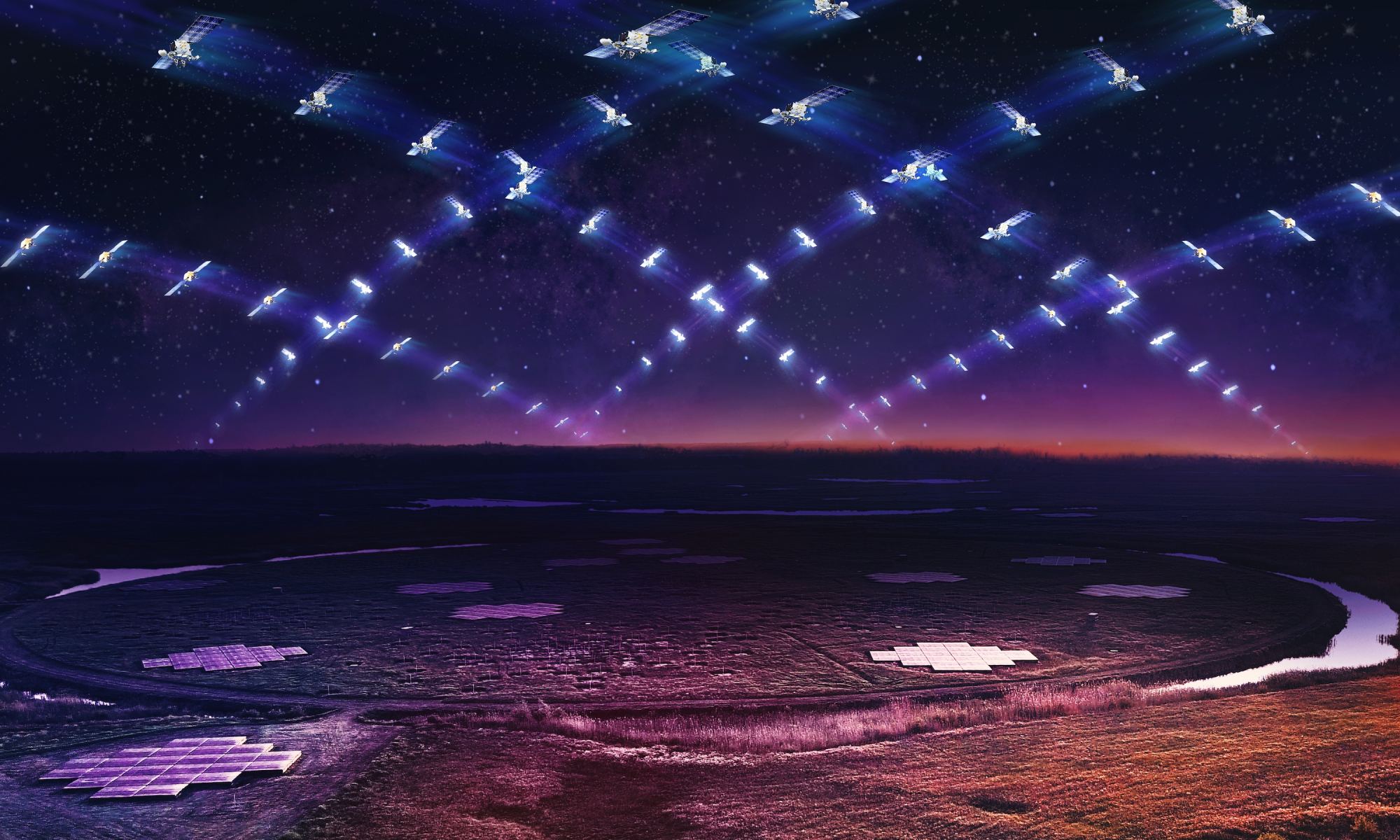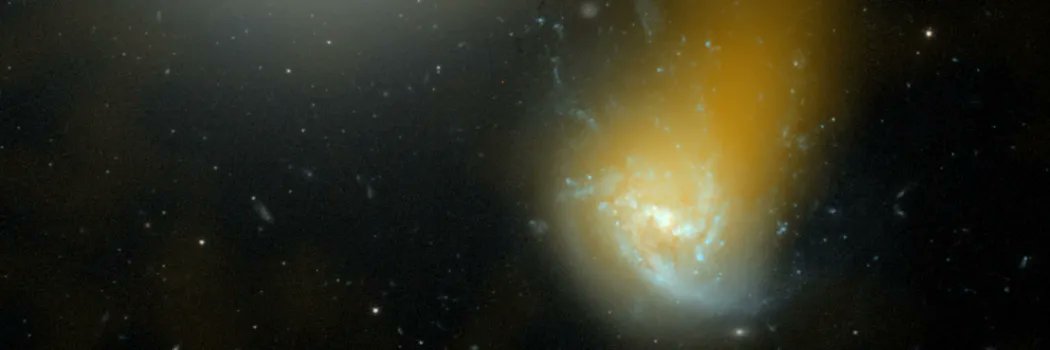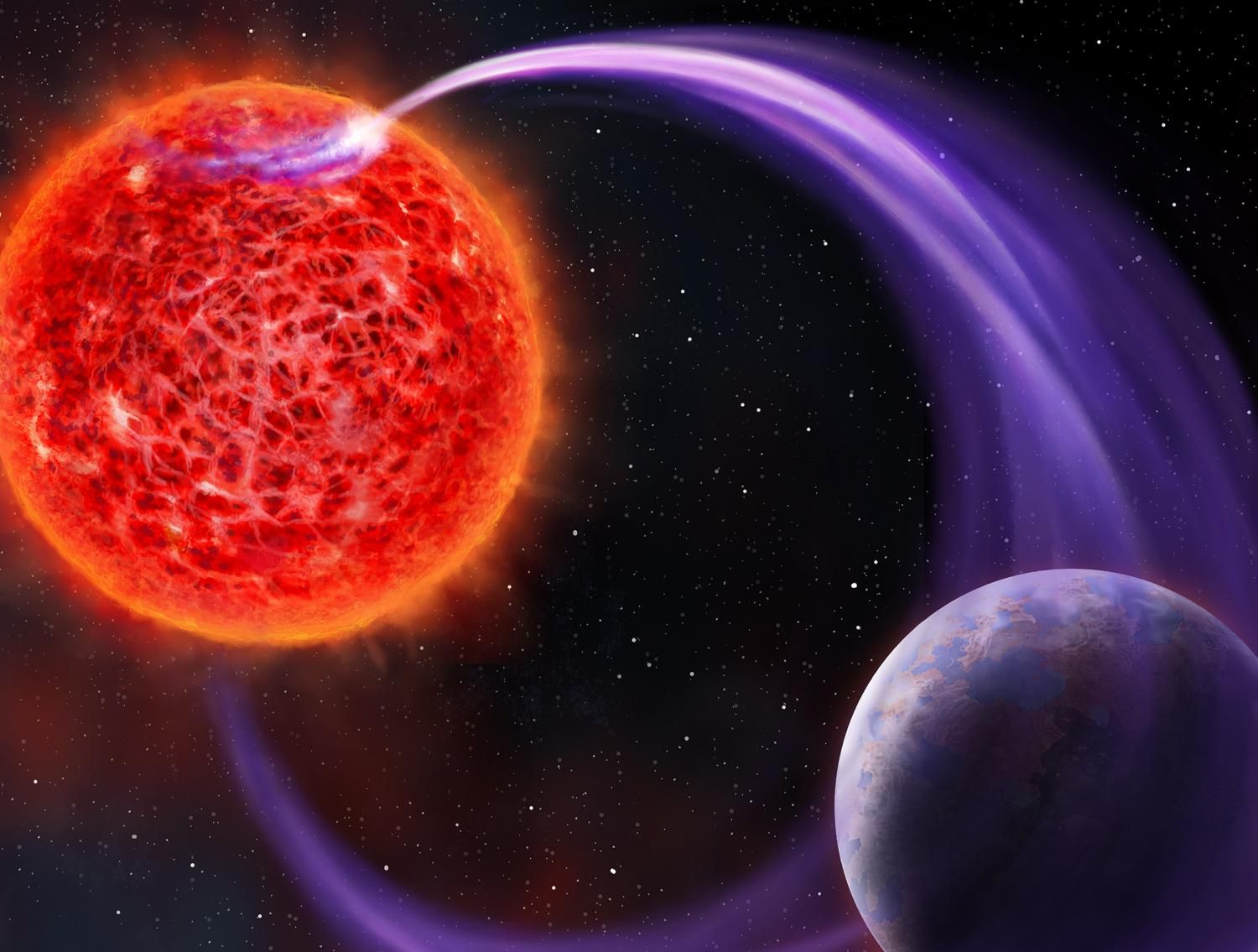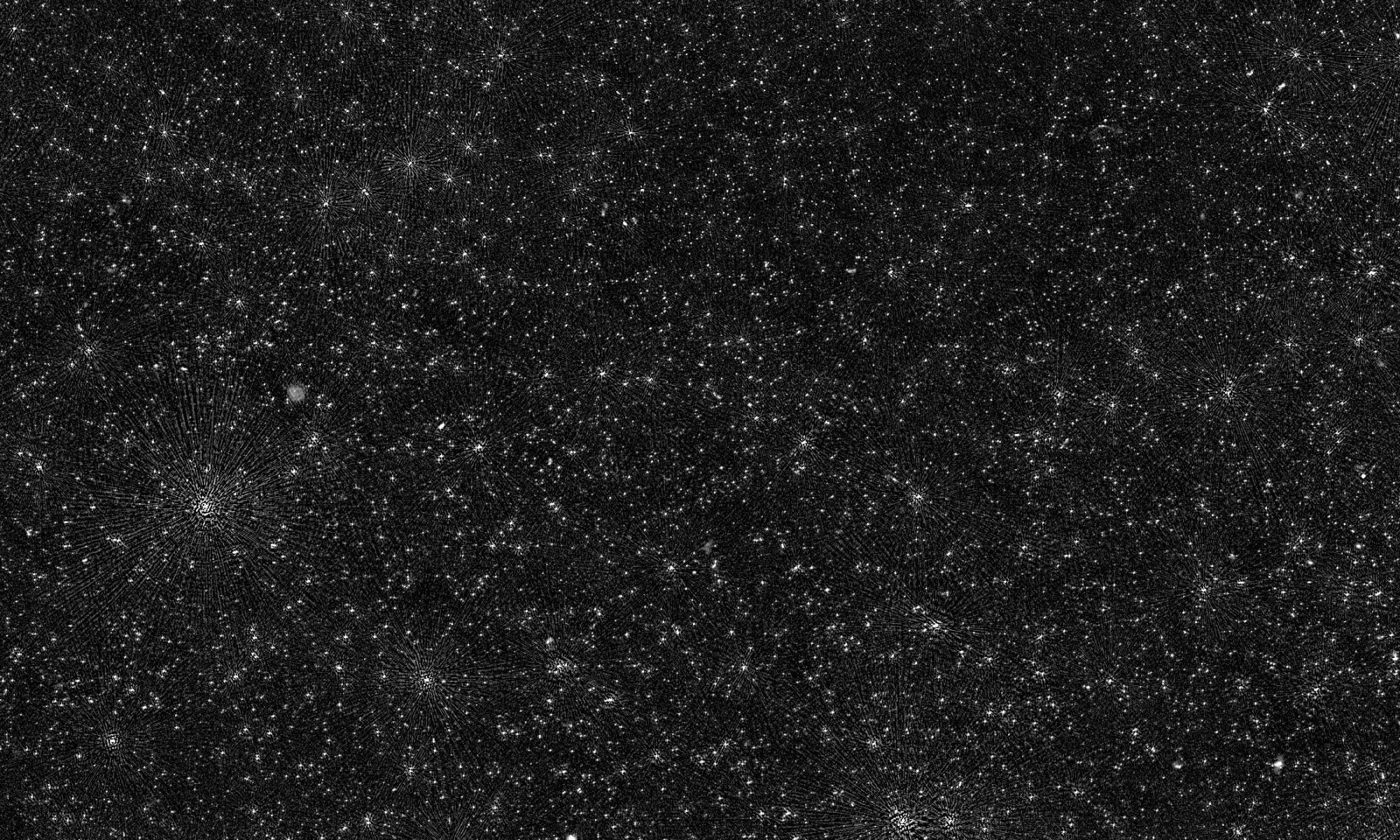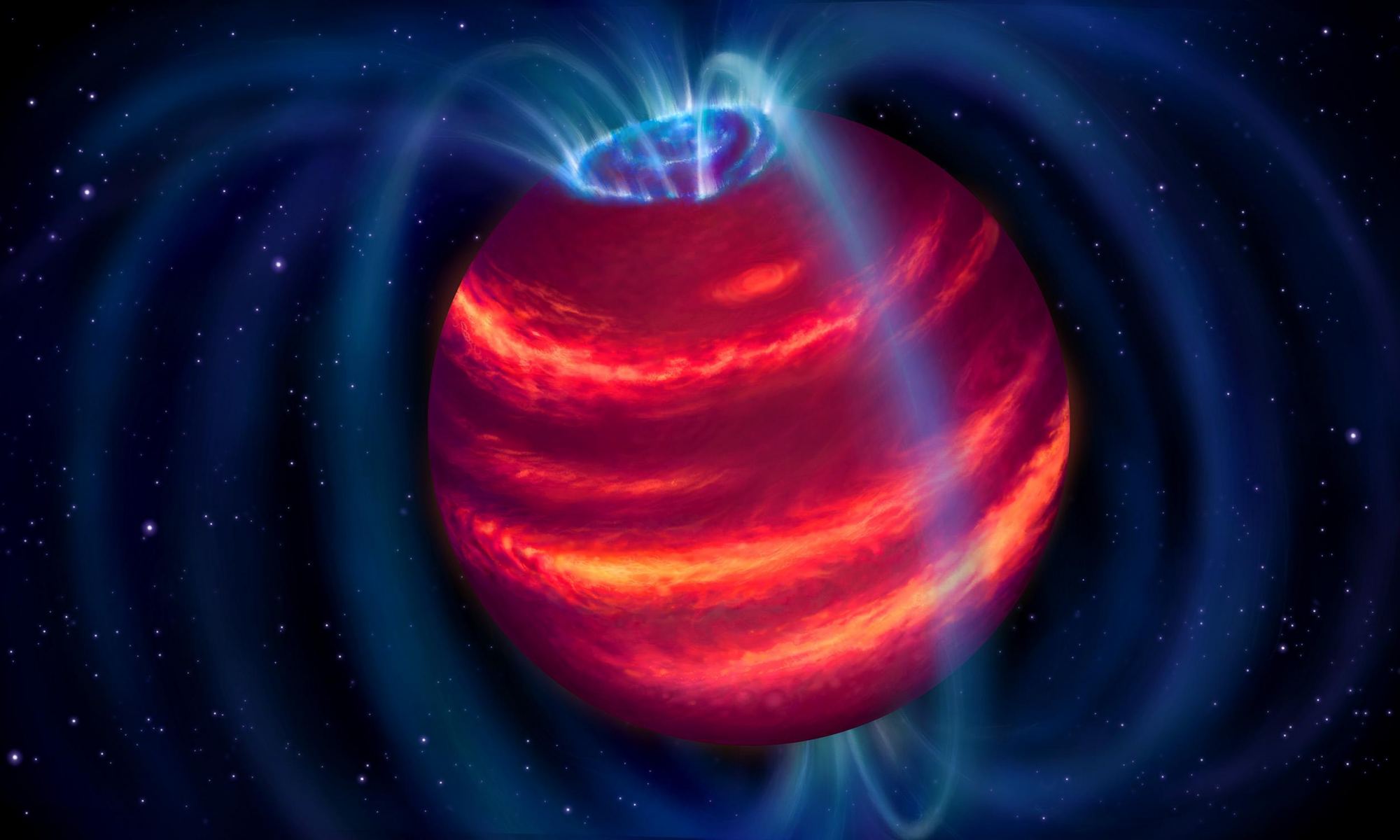Black holes often appear in science fiction movies, largely because elements of their existence are still a mystery. They have fascinating impacts on the surrounding region of space too with distortions in space and time high on the list. A team of astronomers have found a supermassive black hole with twin jets blasting out an incredible 23 million light years, the longest yet. To put this into context, if you lined up 140 Milky Way galaxies side by side, then that’s the length of the jet!
Continue reading “Astronomers Find the Longest Black Hole Jets Ever Seen”Second Generation Starlinks are 32 Times Brighter in Radio Wavelengths
Global internet access does seem like a worthy enterprise yet the rise of satellite megaconstellations there is a danger of the night sky becoming ruined. Astronomers the world over are keeping an eye on the impact these satellites are having on the night sky. Until recently the concerns have been relating to the reflection of visible light against the sky hindering night time observations. A recent study shows that the second-generation Starlink satellites leak 32 times the radio signal than the previous models. Are their presence putting at risk the radio sky now too?
Continue reading “Second Generation Starlinks are 32 Times Brighter in Radio Wavelengths”Astronomers Have a New Way to Bypass Earth's Atmosphere

Radio telescopes have an advantage over optical telescopes, in that radio telescope can be used even in cloudy conditions here on Earth. That’s because the longer wavelengths of radio waves can pass through clouds unhindered. However, some wavelengths are still partially obscured by portions of Earth’s atmosphere, especially by the ionosphere which traps human-made Radio Frequency Interference (RFI).
Astronomers have developed a new calibration technique that allows them to take sharp images in low radio frequencies — between 16 and 30 MHz — for the first time, bypassing the influence of the ionosphere. The astronomers say this will allow them to study things like plasmas emanating from ancient black holes and perhaps even detect exoplanets that orbit small stars.
Continue reading “Astronomers Have a New Way to Bypass Earth's Atmosphere”Planets Orbiting Pulsars Should Have Strange and Beautiful Auroras. And We Could Detect Them
We have been treated to some amazing aurora displays over recent months. The enigmatic lights are caused by charged particles from the Sun rushing across space and on arrival, causing the gas in the atmosphere to glow. Now researchers believe that even on exoplanets around pulsars we may just find aurora, and they may even be detectable.
Continue reading “Planets Orbiting Pulsars Should Have Strange and Beautiful Auroras. And We Could Detect Them”SETI Works Best When Telescopes Double-Check Each Other

The Search for Extraterrestrial Intelligence (SETI) has evolved considerably in the past sixty years since the first experiment was conducted. This was Project Ozma, which was conducted in 1960 by Dr. Frank Drake and his colleagues using the National Radio Astronomy Observatory (NRAO) in Green Bank, West Virginia. While the experiment did not reveal any radio signals from space, it established the foundation upon which all future SETI is based. Like Ozma, the vast majority of these experiments have searched for possible technosignatures in the radio spectrum.
Unfortunately, this search has always been plagued by the problem of radio interference from Earth-based radio antennas and satellites in orbit, which can potentially flood SETI surveys with false positives. In a recent study, an international team of astronomers (including researchers with Breakthrough Listen) recommended that future technosignature searches rely on multi-site simultaneous observations. This has the potential of eliminating interference from terrestrial sources and narrowing the search for extraterrestrial radio signals.
Continue reading “SETI Works Best When Telescopes Double-Check Each Other”Comprehensive Sky Survey Finds Over a Million New Objects
In perfect viewing conditions, with good eyesight and clear, dark skies, the average person can see between 2,500 and 5,000 stars in the night sky. Add a telescope to the mix, and the number of visible objects in the sky explodes exponentially. For example, in 1995, the Hubble Space Telescope famously pointed its mirrors at a tiny piece of empty space – about 1/12th the size of the Moon – and revealed three thousand new objects crammed into that little area, most of them distant galaxies, offering a glimpse of the past stretching back to the early Universe. The astounding implication of the Hubble Deep Field image was that there are still billions of objects out there yet unseen by human eyes (or telescopes). Since then, the process of surveying deep space has been a massive ongoing undertaking, using all the tools available to us, from visible light telescopes like Hubble to infrared and radio telescopes. In a new data dump last week, a major radio sky survey, LOFAR, has revealed over a million new, never before seen objects in the night sky.
Continue reading “Comprehensive Sky Survey Finds Over a Million New Objects”LOFAR Sees Strange Radio Signals Hinting at Hidden Exoplanets
LOFAR sees ‘exoplanet aurorae’ near distant red dwarf suns.
A powerful new method may help to detect exoplanets, via the aurorae they induce on their host star. The finding was announced recently from ASTRON’s Low Frequency Array radio telescope (LOFAR), based out of Exloo in the Netherlands, and sprawled across sites in Europe.
Continue reading “LOFAR Sees Strange Radio Signals Hinting at Hidden Exoplanets”A map of 25,000 Supermassive Black Holes Across the Universe
The Low-Frequency Array (LOFAR) is a different kind of radio telescope. Although radio light has the longest wavelengths and lowest frequencies of the electromagnetic spectrum, much of radio astronomy has focused on the higher frequency end. Observatories such as ALMA study radio light at frequencies of hundreds of Gigahertz, and the VLA studies the fifty Gigahertz range, LOFAR captures radio signals below 250 Megahertz, which is in the range of the lowest radio frequencies that can be seen from Earth.
Continue reading “A map of 25,000 Supermassive Black Holes Across the Universe”Brown dwarf discovered with a radio telescope for the first time
Brown dwarfs are interesting objects. They are generally defined as bodies massive enough to trigger the fusion of deuterium or lithium in their cores (and are thus not a planet) but too small to fuse hydrogen in their cores (and therefore not a star). They are the middle children of cosmic bodies.
Continue reading “Brown dwarf discovered with a radio telescope for the first time”Complete and Total Mayhem in a Distant Galaxy Collision
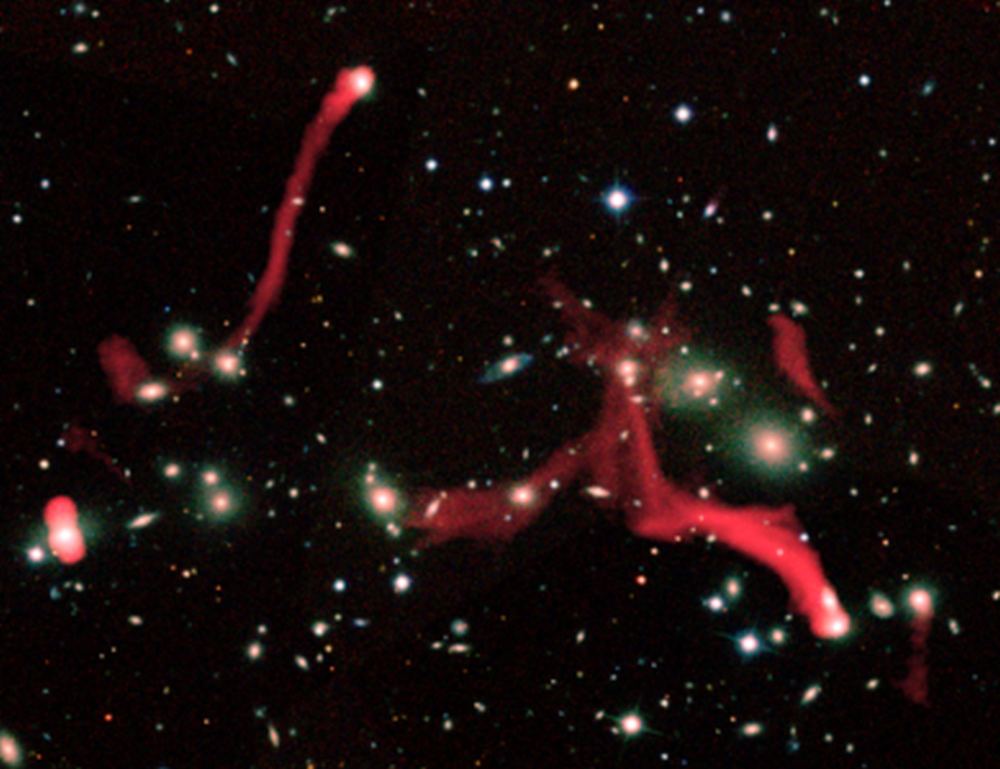
A cluster of galaxies is nothing trivial. The shocks, the turbulence, the energy, as all of that matter and energy merges and interacts. And we can watch all the chaos and mayhem as it happens.
A team of astronomers are looking at the galaxy cluster Abell 2255 with the European Low-Frequency Array (LOFAR) radio telescope, and their images are showing some never-before-seen details in this actively merging cluster.
Continue reading “Complete and Total Mayhem in a Distant Galaxy Collision”

